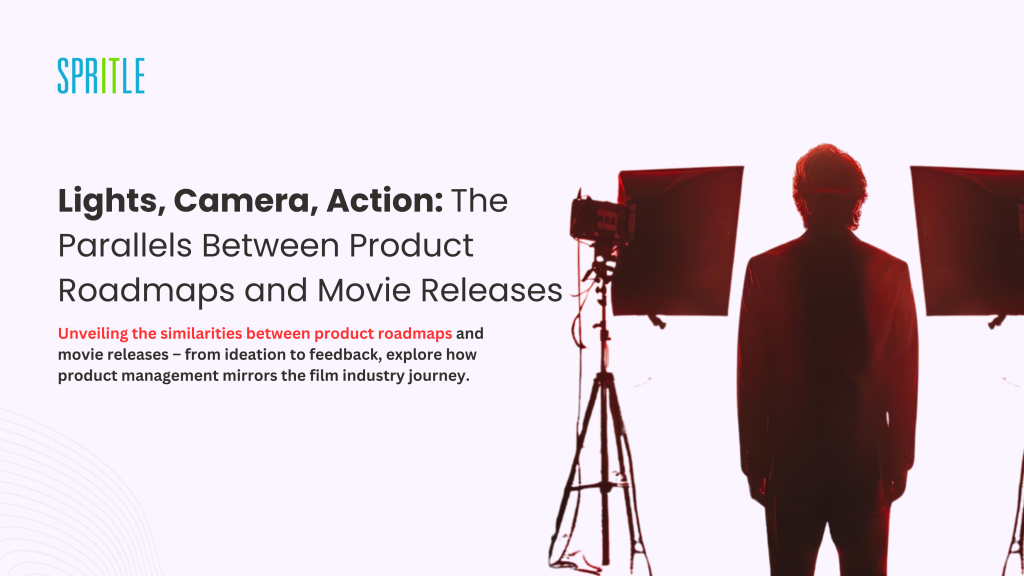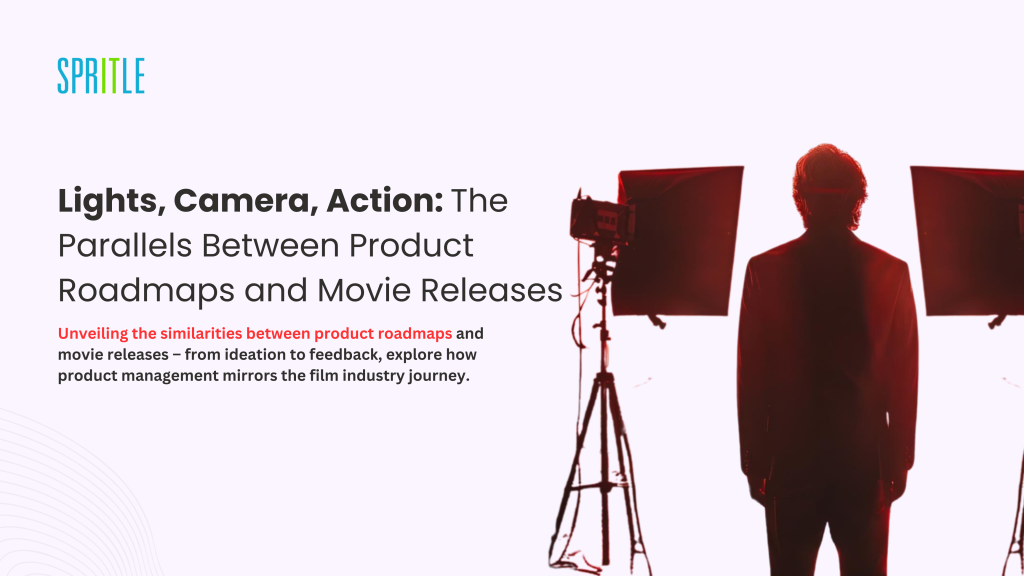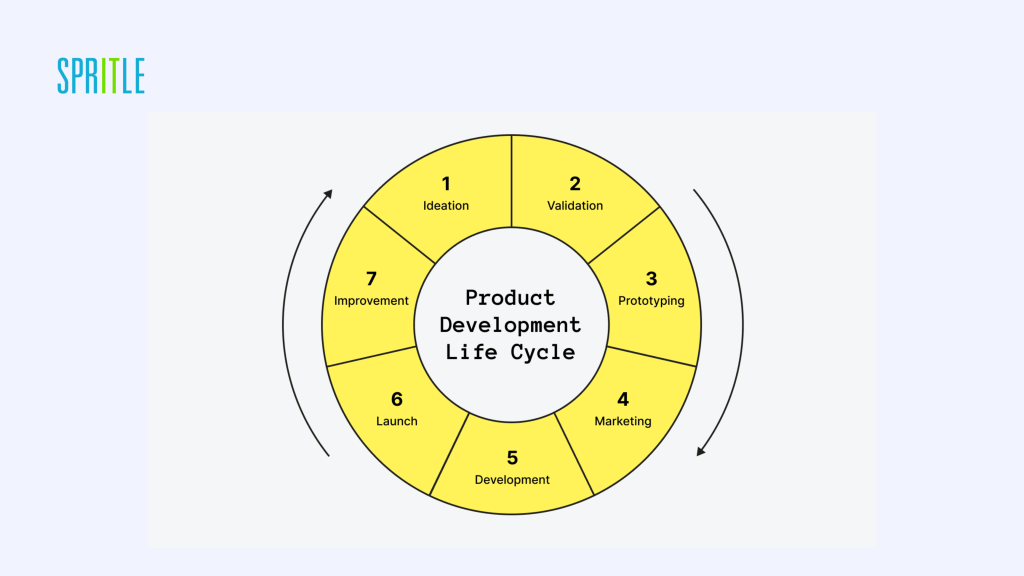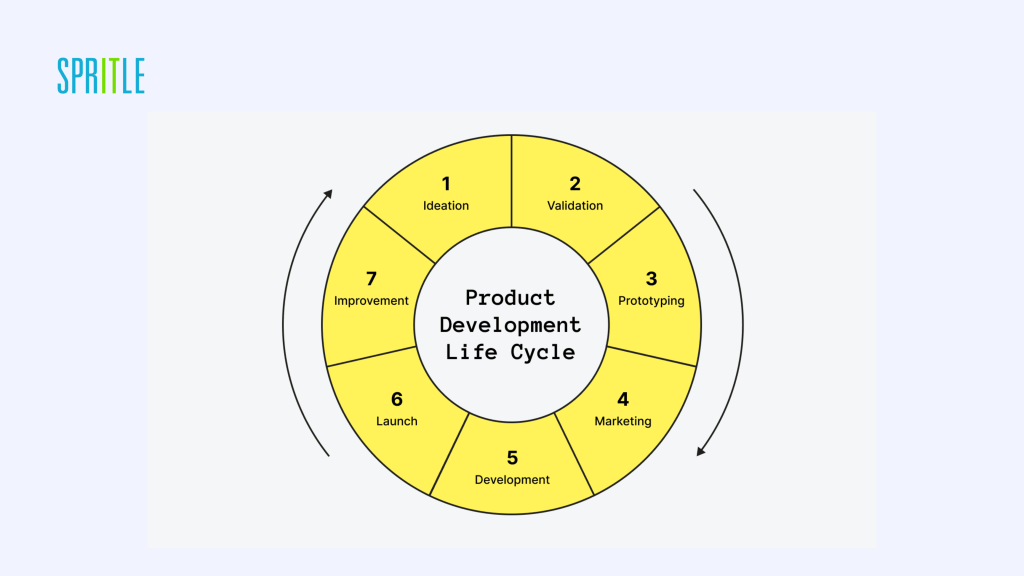

In the world of product management, building and releasing a product feels like orchestrating the release of a movie. Like how filmmakers create, develop, and release films to the public, product teams follow a detailed roadmap to bring their vision to life. This comparison offers a fresh perspective on how a product roadmap closely resembles the journey of a movie release, from the initial spark of an idea to the final feedback from the audience. Let’s break down how these two worlds align.


1. The Concept (Ideation Stage)
Movie: Every great movie starts with an idea, a concept that inspires the filmmaker. It could be a new storyline, a character arc, or even a remake of an old classic. This is where the creativity flows, brainstorming takes place, and the team envisions how the movie will unfold.
Product: Similarly, in the product world, the roadmap begins with ideation. Product teams identify market gaps, customer pain points, and emerging trends to conceptualize a product. Just like screenwriters, they gather inputs from stakeholders and brainstorm new features or innovations that can add value to users.
2. Writing the Script (Market Research & Validation)
Movie: Once the concept is finalized, it’s time to put pen to paper. The script serves as the foundation, outlining every dialogue, scene, and transition. Before investing millions into production, the script often goes through several drafts and revisions to ensure it resonates with the audience.
Product: This stage is akin to conducting market research and validating ideas. Product teams refine their product concepts, conducting surveys, interviews, and focus groups to ensure the proposed solution fits market needs. This step is crucial to avoid investing time and resources into a product that doesn’t solve real-world problems.
3. Pre-production (Product Planning)
Movie: During pre-production, all the planning for the movie happens. The production team secures locations, finalizes the cast, and organizes the shoot schedule. Every detail is scrutinized before the cameras start rolling.
Product: In the product lifecycle, this is equivalent to planning and designing the product. The product team creates a detailed roadmap, outlining key milestones, timelines, and resource allocation. UX/UI designers work on wireframes and prototypes, ensuring the product vision is clear before development begins.
4. Filming (Development)
Movie: Lights, camera, action! The actual filming process is where all the ideas come to life. Directors, actors, and the crew work hard to capture each scene according to the script, ensuring the vision is faithfully translated onto the screen.
Product: This is the development phase for the product team. Engineers begin coding, bringing the features and design to life. The team works collaboratively to ensure that the product stays true to the vision while solving technical challenges that arise during the build.
5. Post-production (Testing & Refinement)
Movie: Once filming wraps, post-production begins. This is where editors stitch together the raw footage, add special effects, and refine the film’s pacing and sound. It’s a critical stage where everything gets polished for the final cut.
Product: In product development, this is the testing and refinement stage. QA teams conduct rigorous testing to ensure the product is bug-free and ready for launch. Beta versions might be released to a select audience to gather feedback, much like test screenings for a film. Adjustments are made based on this feedback, ensuring a smooth user experience.
6. Marketing & Hype (Product Launch Preparation)
Movie: Long before the movie hits the theaters, marketing kicks into full swing. Trailers, posters, and interviews create anticipation and excitement. Pre-release buzz ensures that audiences are eagerly awaiting the film’s debut.
Product: For a product, the marketing team creates launch strategies, prepares press releases, social media campaigns, and product demos. Teasers and announcements generate excitement among potential users, similar to a movie’s marketing campaign. The goal is to build momentum and make the product launch a highly anticipated event.
7. Premiere Night (Product Launch)
Movie: The red carpet is rolled out, and the film makes its grand debut to critics and audiences alike. Premiere night is a culmination of months, if not years, of hard work. It’s the moment the world finally gets to experience the film.
Product: The product launch is a big moment for product teams. After months of development, testing, and marketing, the product is finally released to users. Whether it’s a soft launch or a global release, this is when the product becomes available for real-world use.
8. Box Office & Reviews (User Feedback)
Movie: After the release, filmmakers eagerly wait for box office numbers and reviews. Did the movie resonate with audiences? Did it meet expectations, or did it flop? Feedback from critics and fans can shape the next steps for the filmmakers.
Product: In the product world, this is the stage where feedback from users comes in. Metrics like user adoption, retention rates, and customer satisfaction determine the product’s success. Just like filmmakers, product teams carefully analyze this feedback, learning what worked, what didn’t, and how future iterations can improve.
9. Sequels and Spin-offs (Product Iterations & Updates)
Movie: If a movie is successful, sequels and spin-offs are often planned. These new installments build upon the original, expanding the story and delivering even more value to fans.
Product: Similarly, after a successful product launch, product teams roll out updates, new features, and iterations. Continuous improvement is the key to keeping users engaged and ensuring long-term success.
Conclusion
The journey of a movie from concept to screen mirrors the development of a product in many ways. Both require vision, collaboration, and careful planning and ultimately, both are judged by their audiences. Whether you’re a filmmaker or a product manager, the goal is the same: to deliver something that resonates with people, creates impact, and leaves a lasting impression.
In both industries, the work doesn’t stop with the release it’s a continuous cycle of feedback, learning, and growth. Just as filmmakers evolve with each new project, so do product teams with every new release, always striving for that next big hit.